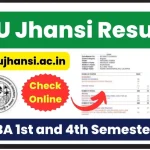In November 2024, a $725 stimulus check has become a topic of widespread interest as governments and local administrations continue to roll out targeted financial assistance programs. Designed to provide relief to those facing economic hardships, this stimulus payment is an opportunity to ease the financial burdens of low-income individuals and families. If you’re wondering about your eligibility and the process for claiming this stimulus, this guide provides all the details you need.
Here’s a breakdown of eligibility criteria, application steps, and other important information to ensure you don’t miss out.
$725 Stimulus Check- Key Highlights
| Topic | Details |
|---|---|
| Payment Amount | $725 |
| Target Audience | Low-income individuals and families based on specific eligibility criteria |
| Payment Dates | November 2024 (exact date varies by program or region) |
| Eligibility | Income thresholds, family composition, or benefit enrollment |
| Application Required | Dependent on program specifics |
| Official Resources | IRS Official Website or relevant state/local administration links |
The $725 stimulus check offers critical financial support for individuals and families during a challenging economic period. By understanding the eligibility criteria and following the steps outlined above, you can ensure you receive the assistance you’re entitled to. Stay proactive by monitoring official channels and updating your details to avoid delays.
What Is the $725 Stimulus Check About?
The $725 stimulus payment is part of a broader initiative to support households struggling with rising living costs. This amount is not universal but targeted, aimed at low-income families or individuals in specific circumstances. While similar to previous stimulus payments issued during the pandemic, this version has narrower eligibility to ensure funds reach those most in need.
The payment addresses common challenges:
- Covering essential costs like housing, groceries, and utilities.
- Providing relief during seasonal financial pressures, especially before the holiday season.
- Acting as an economic booster for local economies.

Who Is Eligible for the $725 Stimulus Check?
Eligibility for the $725 stimulus payment is determined by several factors, which can vary depending on the program’s origin. Here are the primary criteria:
1. Income Threshold
The stimulus check is generally aimed at individuals or families with an annual income below a specified threshold. For instance:
- Single Filers: Typically below $40,000 annually.
- Married Filing Jointly: Combined income under $80,000.
- Heads of Household: Income below $60,000.
2. Benefit Enrollment
In some cases, being enrolled in specific social welfare programs automatically qualifies you for the payment. These might include:
- Supplemental Nutrition Assistance Program (SNAP)
- Temporary Assistance for Needy Families (TANF)
- Unemployment Benefits
3. Family Composition
Some programs prioritize families with dependents, especially young children. If you’re a parent or guardian, you may have a higher chance of qualifying.
4. Residency
Certain programs limit eligibility to residents of specific states or municipalities.
Example:
Anna, a single mother living in California, earns $35,000 annually and receives SNAP benefits. She automatically qualifies for the stimulus payment without applying, as her income and benefits align with eligibility requirements.
How to Claim the $725 Stimulus Check
The process for claiming your $725 stimulus check depends on the program offering it. Below is a general guide:
Step 1: Confirm Eligibility
Verify the criteria on the official website of the administering body, such as the IRS or your state government.
Step 2: Check Application Requirements
- If the payment is automatic: Ensure your personal and bank details are up-to-date with the relevant authorities.
- If an application is needed: Submit the required documents before the deadline. This often includes proof of income, residency, and family status.
Step 3: Monitor Payment Updates
Stay informed via official communication channels, including government websites, email alerts, or local offices.
Step 4: Receive Payment
Payments are typically issued via direct deposit or paper checks. Confirm with your financial institution that your account is set to accept these payments.
When Will Payments Be Distributed?
Payments will be issued in November 2024, though exact timelines can vary by program. Automatic payments often begin mid-month, while those requiring applications may have longer processing times.
Payment Distribution Methods:
- Direct Deposit: For individuals with active banking information on file.
- Paper Check: Sent via mail to the address provided during application.
- Prepaid Debit Cards: In some cases, payments may be loaded onto government-issued cards.
Example Timeline:
- November 15, 2024: First wave of automatic payments issued.
- November 30, 2024: Deadline for processing paper checks.
Student Loan Forgiveness: How to apply for Student Loan Forgiveness Program in the USA
$3600 & $3000 American Rescue Plan Child Tax Credit: Know Eligibility & Payment Dates
Why This Payment Matters
The $725 stimulus payment is not just financial relief—it’s a lifeline for many. Here’s why it’s significant:
1. Alleviating Economic Strain
With inflation pushing up the cost of essentials, low-income households often face tough choices. This payment helps bridge financial gaps.
2. Boosting Local Economies
Recipients typically spend their stimulus funds on immediate needs like groceries and utilities, injecting cash into local businesses.
3. Reducing Inequality
Targeted payments focus on vulnerable groups, helping to level the playing field and address systemic disparities.
Statistics on Economic Impact:
- According to a 2024 Federal Reserve Report, 68% of low-income families spent their previous stimulus checks on necessities.
- A similar program in California saw local businesses report a 12% increase in revenue during the stimulus payment period.
Frequently Asked Questions (FAQs)
Q1: Is the $725 stimulus check taxable?
No, stimulus payments are considered tax credits and are not taxable income.
Q2: Do I need to apply for the payment?
In many cases, payments are automatic. However, if you’re unsure, check with your local or federal program administrator.
Q3: What if I didn’t receive my payment?
Contact the issuing agency, such as the IRS, to track your payment. Ensure your details are current.
Q4: Can undocumented individuals receive the payment?
Eligibility requirements vary, but most programs require valid Social Security numbers or taxpayer identification.
Q5: Can I still apply if I miss the deadline?
Most programs have strict deadlines. However, late applications might be considered in exceptional circumstances.









